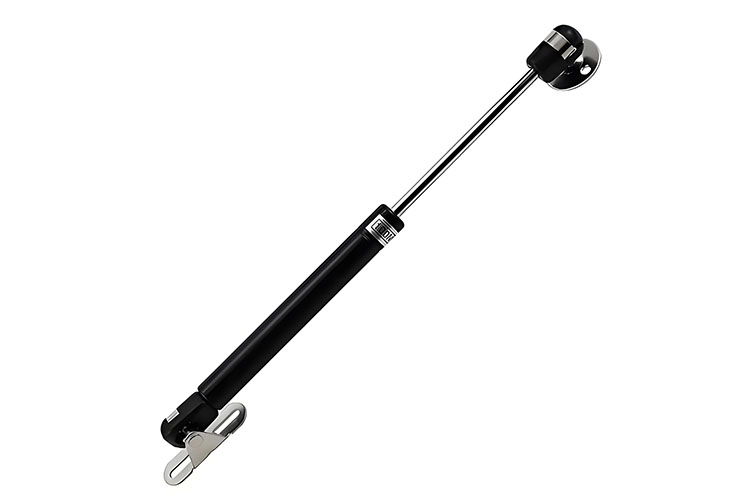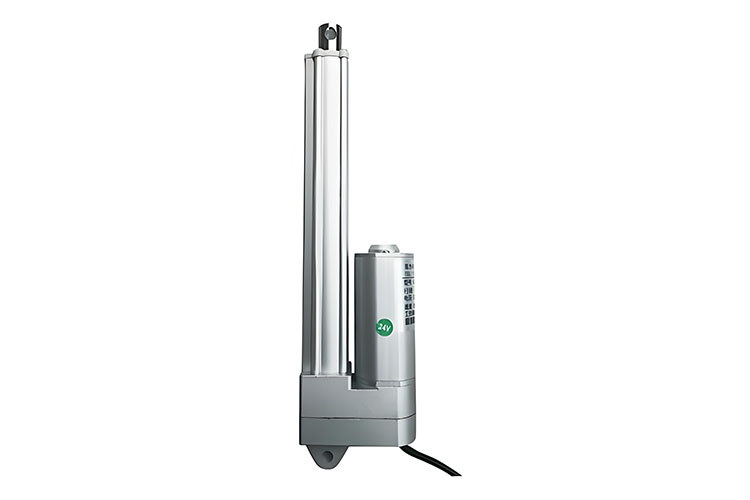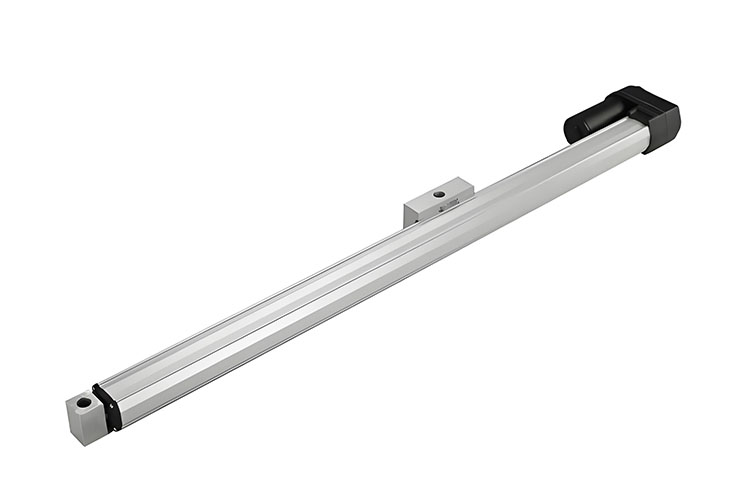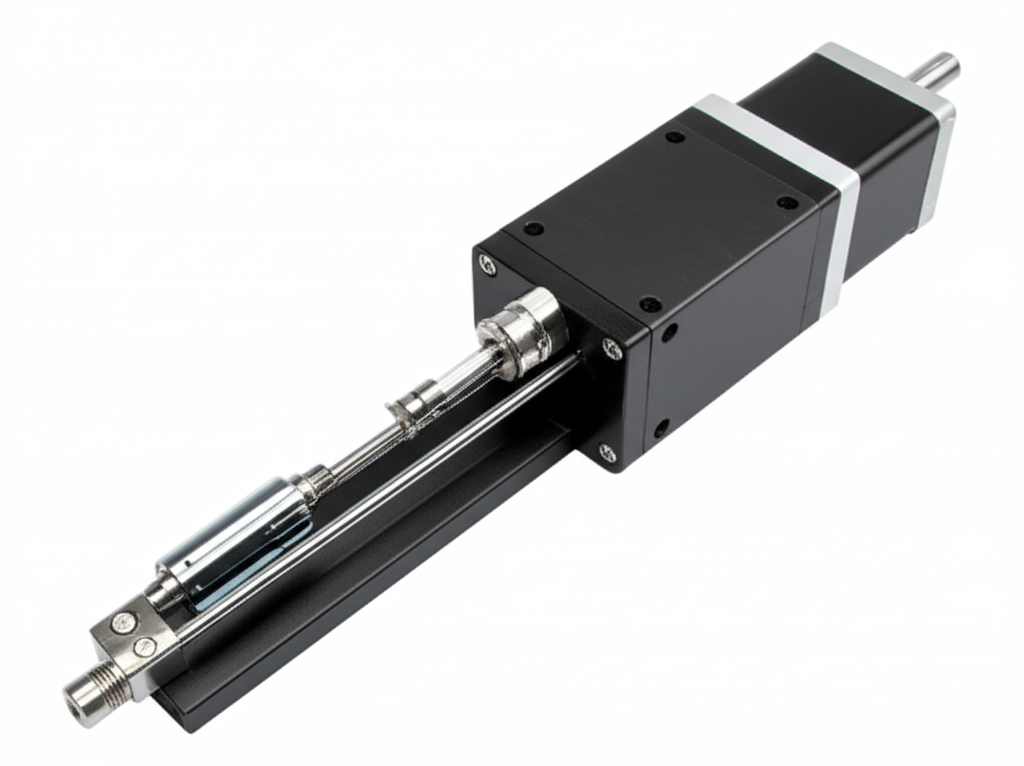You want parts to move in a straight line. You want them to move fast. You want them to stop on a dime. You want them to last. I help you do that with track linear actuators.
I am Jimi Technology Co., Ltd. I make high‑quality linear actuators, TV lifts, and automation systems. My products turn electric power into linear motion. You tap a button. The unit will raise. It will lower. It will push. It will pull. It will tilt. I do more than sell. I guide you. I build custom motion control solutions. I am a trusted expert and authority in industrial automation and motion control.
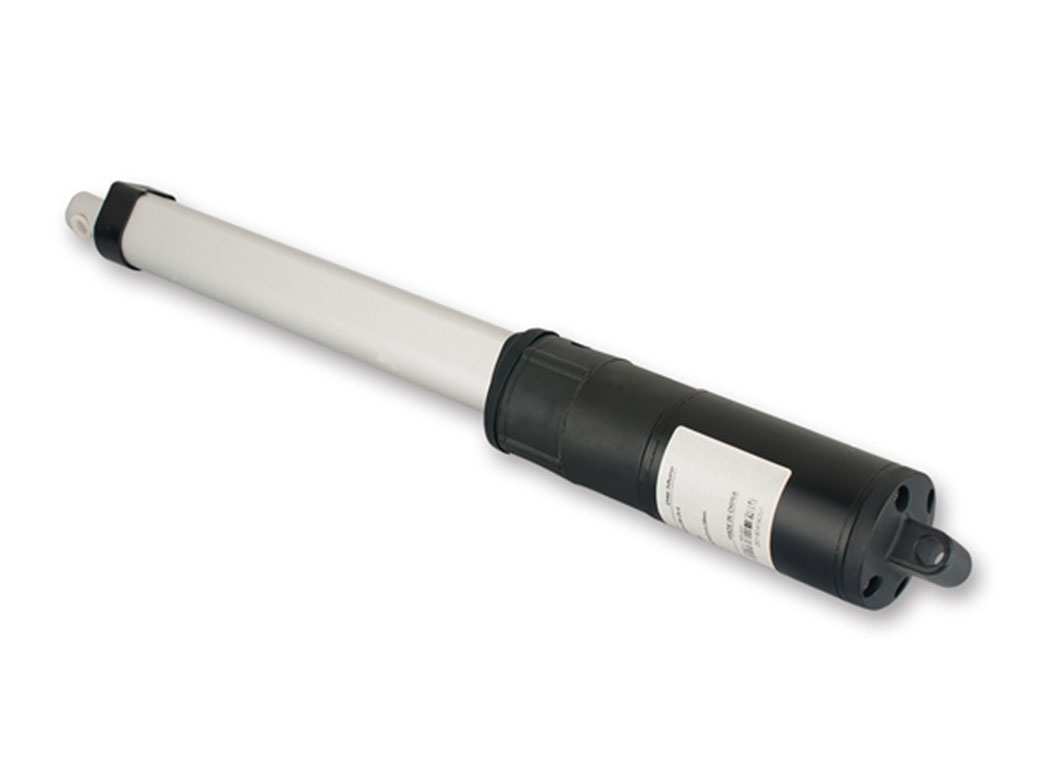
What is a Track Linear Actuator?
A track linear actuator is a smart rail with a moving carriage. A motor turns. The drive makes the carriage slide on a guide rail. The load sits on the carriage. The load moves in a line. This is linear motion.
It is not a rod that goes in and out. It is a rodless linear actuator on a track. You get long stroke length. You get precision. You get repeatability.
How It Works
- Motor makes spin. Spin makes slide.
- You can use a stepper motor, a servo motor, a DC motor, or an AC motor.
- The drive mechanism can be:
- Ball screw for high efficiency, fine precision, and big load capacity.
- Lead screw for self‑locking hold and low cost.
- Belt drive for high speed and long travel.
- Linear bearings and profile rail guides keep motion smooth.
- Limit switches and an encoder help the controller stop in the right spot.
- A PLC or HMI can run the unit. You can add a brake motor, coupling, or gearbox if you need more control.
- Protective covers and wipers keep dust out.
Think of it like a train. The motor is the engine. The track is the linear motion guide rail. The car is the carriage. It runs straight. It runs true.
Types You Can Choose
- By drive:
- Ball screw track actuators
- Lead screw track actuators
- Belt driven track actuators
- By setup:
- Single‑axis linear stages
- Multi‑axis gantry systems like XY or XYZ linear stage
- Rodless and supported rod‑style track versions
- By place:
- Industrial standard
- Cleanroom use
- Harsh environment with IP rating and waterproof design
I also build linear motor actuators for ultra smooth moves. I offer compact and miniature sizes. I support long stroke and high speed needs.
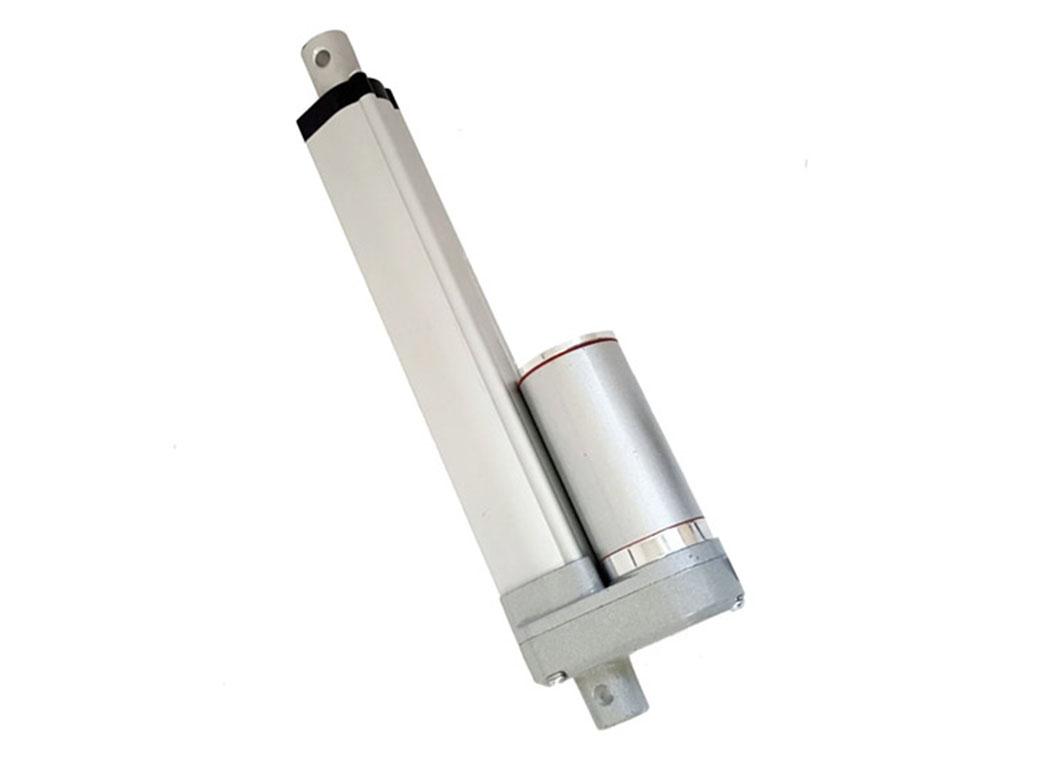
Key Parts and Features
- Motors: Stepper, servo, brushless DC, or DC
- Drive trains: ball screw, lead screw, belt, and gearboxes
- Guides: profile rails, round rails, and integrated guides
- Carriage: the flat top where you mount the load
- Sensors: encoders, limit switches, and Hall sensors
- Controls: PLC, controller, and HMI screens
- Extras: protective bellows, wipers, and structural aluminum extrusions
- Options: actuator encoder feedback, actuator synchronisation, and brake motor actuator
Why Use Track Linear Actuators
- High precision and repeatability. Hit the mark again and again.
- Strong load handling. Take axial, radial, and moment loads with ease.
- Long stroke. Travel short or travel very far.
- Space‑efficient design. Rodless saves length.
- Durable build for industrial automation and harsh environments.
- Easy to integrate with your control system.
- Energy efficient vs pneumatic or hydraulic.
I design for duty cycle needs. I size for actuator speed control. I hit your actuator technical specifications. I match your actuator dimensions and mounting options. I plan your actuator maintenance and lubrication.
Where You Can Use Them
- Industrial automation actuator jobs: pick and place, assembly, welding, dispensing
- Robotics: gantry robot, Cartesian robots, mechatronics linear systems
- Medical devices and lab: imaging, fluid handling
- Packaging industry: sorting, palletizing
- Material handling actuator tasks
- Solar tracking actuator systems
- Automotive build lines
- Aerospace tools and tests
- Ergonomic furniture like desks and lifts
- AGV and conveyor systems linear motion
- Inspection automation, dispensing automation, and factory automation linear
Need a desk to go up and down. I use ergonomic desk actuator and lifting columns. Need a patient lift actuator. I build it. Need valve automation actuator. I do that too.
Data You Can Trust
I test. I measure. I share what you can expect.
Table: Typical Performance and Market Signals
| Topic | Data | What It Means |
|---|---|---|
| Market growth | Linear motion systems may reach $10–12B by 2029 at 6–8% CAGR | Demand grows as more plants automate |
| Load capacity | From 50 N to 100,000 N+ | Scale from tiny to huge |
| Speed range | Ball screw up to 1.5 m/s. Belt up to 15 m/s. Lead screw up to 0.8 m/s | Pick your drive to fit speed and stroke |
| Precision | Ball screw ±0.01–0.05 mm. Belt ±0.05–0.2 mm | Ball screw gives finer stop points |
| Energy efficiency | Electric 80–90% vs pneumatic 10–30% vs hydraulic 50–70% | You can save power and cost |
| Life | Ball screw L10 often 20,000 km of travel | Long life with right load and lube |
Simple chart: Drive vs Speed
- Ball screw: |||||||||| (up to 1.5 m/s)
- Belt drive: |||||||||||||||||||||||||| (up to 15 m/s)
- Lead screw: |||||||| (up to 0.8 m/s)
Real Results
- Case 1. A pill line used belt driven track linear actuators. Output went up 25%. Errors went down 90%. Clean and safe.
- Case 2. A solar farm used heavy‑duty units with IP rating. Power per day rose by 25%. Units ran from −20°C to +50°C.
- Case 3. An aircraft plant used a multi‑axis gantry with ball screw track actuators. Build time fell by 18%. Positional accuracy hit ±0.02 mm.
What You Need. What I Do.
You need clear steps. You need a fit that works on day one.
- Load. I check static, dynamic, and moment loads. I size the actuator load capacity.
- Speed. I set speed & acceleration to meet your motion profile.
- Stroke. I match your stroke length.
- Accuracy. I hit the accuracy & repeatability you ask for.
- Duty. I set the duty cycle you need.
- Place. I pick IP rated linear actuators for outdoor or cleanroom linear actuator units for labs.
- Control. I link with your PLC, PC, or a stand‑alone controller. I add HMI if you want it.
- Cost. I weigh buy price vs life cost. I keep it lean.
- Space. I plan actuator mounting options and orientation.
I compare for you too. I show linear actuator vs pneumatic. I show linear actuator vs hydraulic. You pick the best linear motion technology for your job.
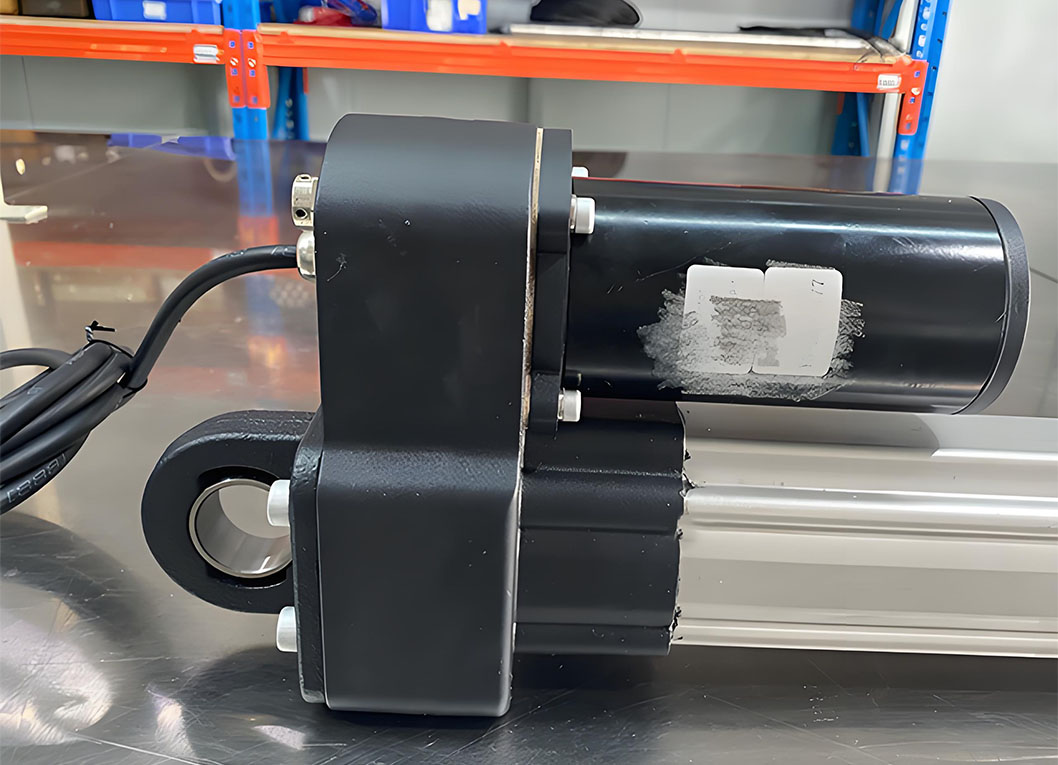
Quick Install and Care
- Align the track and base
- Torque the bolts to spec
- Set limit switch ends
- Home the encoder
- Lube the ball screw or linear bearings by schedule
- Check belts for wear
- Watch for heat or noise
- Use protective covers if dust or splash
If you need help I give you an actuator installation guide, actuator troubleshooting, and service tips.
The Road Ahead
- Industry 4.0 links with IoT for predictive maintenance
- Smart control with better HMI and controller tools
- Miniaturization and higher power density
- Sustainable design and lower power use
I build for now. I design for next.
Why Jimi
- I am a leading supplier of electric linear motion. I make industrial linear actuators, heavy‑duty linear motion, and precision linear actuator systems.
- I build custom linear actuator units as needed. I support linear actuator manufacturers and suppliers worldwide.
- I know mechanical linear actuation and mechatronics linear systems. I support robotics linear motion, medical device actuator needs, packaging machinery actuator lines, material handling actuator tasks, solar tracking actuator fields, automotive assembly actuator tools, aerospace linear motion, and more.
- I support actuator control system design. I deliver actuator encoder feedback and limit switch actuator safety. I can add potentiometer if needed.
- I stock linear bearings system, profile rail linear guide, round rail linear guide, and carriage for linear actuator parts. I also supply end effector mounting kits, structural aluminum extrusions, mounting brackets, power supplies, switches & remotes, and actuator controllers.
If you want fast. I ship high speed linear actuator units. If you want quiet. I ship quiet linear actuators. If you need stainless steel actuators or waterproof linear actuators for a washdown line I can do that too. I also support DIY projects & robotics linear actuators for teaching and labs. I speak to manufacturing industry, packaging industry, medical devices, aerospace, automotive, solar tracking, agriculture, ergonomic furniture, patient lifts, valve actuation, cleanroom, and harsh environments teams each week.
Pick Your Path Now
- See my full line of track systems and get CAD at my page for precision track linear actuators: high‑precision track actuators for automation.
- Need closed‑loop power. See my servo motor actuators: industrial servo motor linear actuators.
- Want fine stop points. See my ball screw actuators: high‑accuracy ball screw linear actuators.
- Planning a long‑stroke rail. See my linear guides & rails: profile and round linear guides and rails.
I guide you on actuator selection criteria. I supply actuator technical specifications and actuator dimensions. I help you set actuator speed control and actuator synchronisation for two or more axes. I share linear actuator design guide notes. I help with linear actuator pricing. I explain the linear actuator benefits, advantages, and drawbacks so you make the right call. I keep your linear actuator maintenance simple.
You can add kits with remote control. You can pick standard/inline actuators, light‑duty / miniature actuators, medium‑duty linear actuators, or heavy‑duty linear actuators. You can pick actuators with position feedback. You can use electric cylinders if you want a rod type. You can compare hydraulic linear actuators and pneumatic linear actuators with my team. You can set up reciprocating cycle actuators. You can deploy in industrial automation, RV & marine automation, solar panel tracking, and standing desks & ergonomics too.
Quick Table: Choose the Right Drive
| Need | Best Drive | Why |
|---|---|---|
| Ultra precision | Ball screw | Tight accuracy and repeatability |
| Long stroke at speed | Belt drive | High speed and quiet |
| Hold without power | Lead screw | Self‑locking and simple |
| Clean room | Ball screw with seals | Low particle and protected |
| Dust or splash | Belt with covers and IP seals | Easy to shield |
Final Word
You want smooth linear motion. You want it safe. You want it now. I bring you track linear actuators that are precise, strong, fast, and efficient. I back you with experience and support. I build what you need to raise, lower, push, pull, or tilt at the touch of a button. Let’s move your world on a straight line.
References
- Bosch Rexroth. Linear Motion Technology Catalog. Accessed 2024.
- Thomson Industries. Ball Screw and Linear Guide Handbook. Accessed 2024.
- Parker Hannifin. Electromechanical Systems Design Guide. Accessed 2024.
- igus. DryLin Linear Guides Technical Data. Accessed 2024.
- Linak. Electric Linear Actuation in Industry. Accessed 2024.



